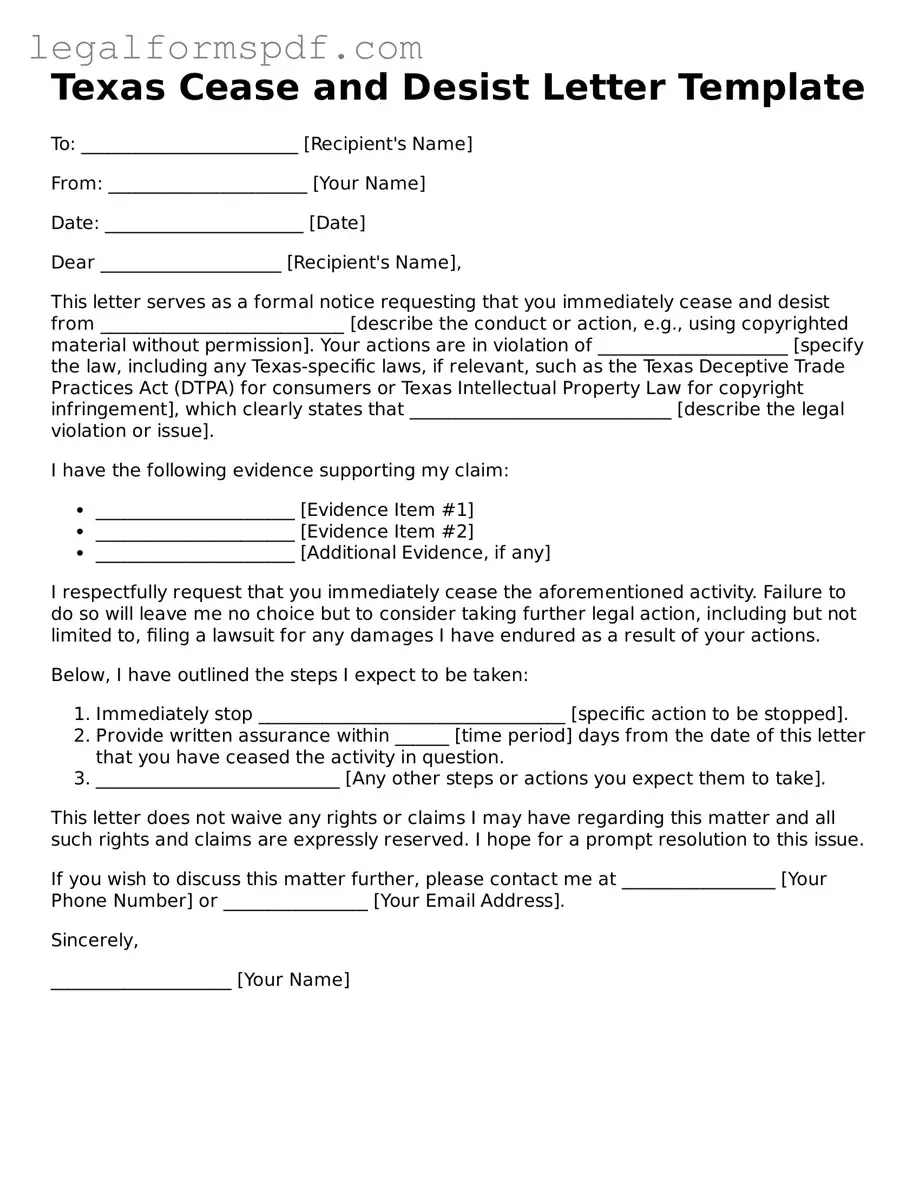Texas Cease and Desist Letter Template
To: ________________________ [Recipient's Name]
From: ______________________ [Your Name]
Date: ______________________ [Date]
Dear ____________________ [Recipient's Name],
This letter serves as a formal notice requesting that you immediately cease and desist from ___________________________ [describe the conduct or action, e.g., using copyrighted material without permission]. Your actions are in violation of _____________________ [specify the law, including any Texas-specific laws, if relevant, such as the Texas Deceptive Trade Practices Act (DTPA) for consumers or Texas Intellectual Property Law for copyright infringement], which clearly states that _____________________________ [describe the legal violation or issue].
I have the following evidence supporting my claim:
- ______________________ [Evidence Item #1]
- ______________________ [Evidence Item #2]
- ______________________ [Additional Evidence, if any]
I respectfully request that you immediately cease the aforementioned activity. Failure to do so will leave me no choice but to consider taking further legal action, including but not limited to, filing a lawsuit for any damages I have endured as a result of your actions.
Below, I have outlined the steps I expect to be taken:
- Immediately stop __________________________________ [specific action to be stopped].
- Provide written assurance within ______ [time period] days from the date of this letter that you have ceased the activity in question.
- ___________________________ [Any other steps or actions you expect them to take].
This letter does not waive any rights or claims I may have regarding this matter and all such rights and claims are expressly reserved. I hope for a prompt resolution to this issue.
If you wish to discuss this matter further, please contact me at _________________ [Your Phone Number] or ________________ [Your Email Address].
Sincerely,
____________________ [Your Name]
